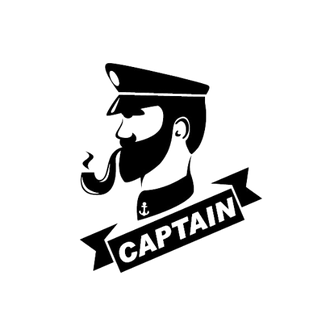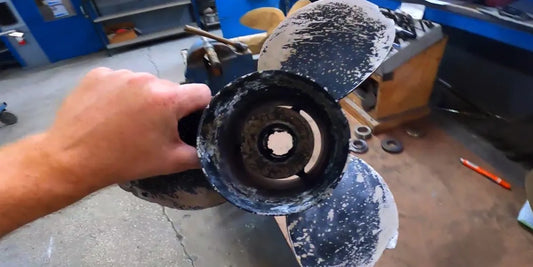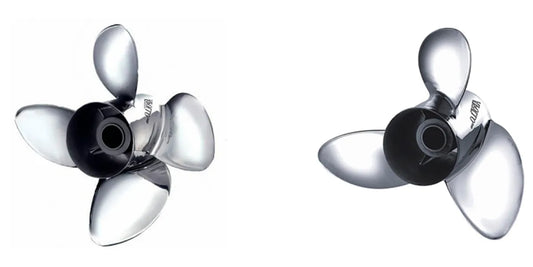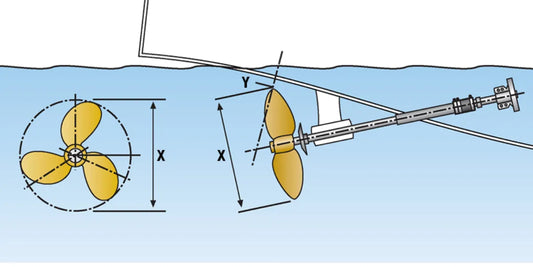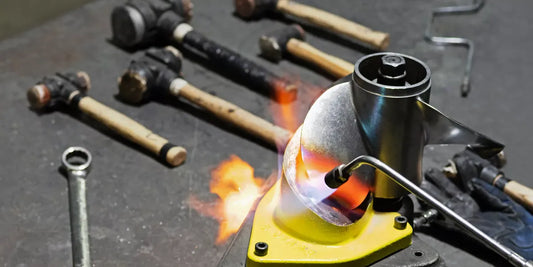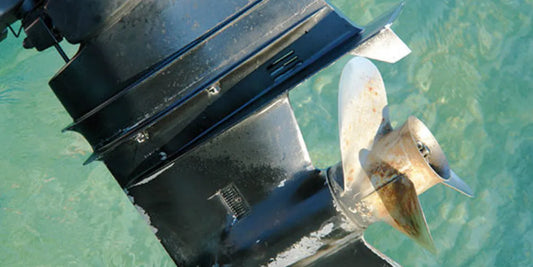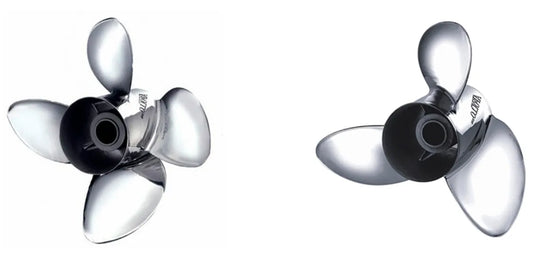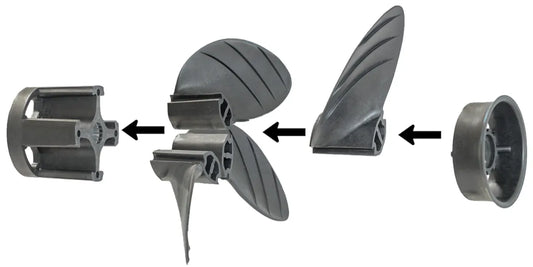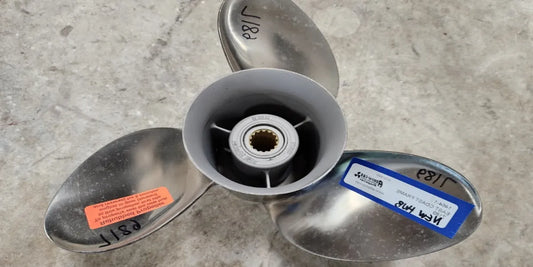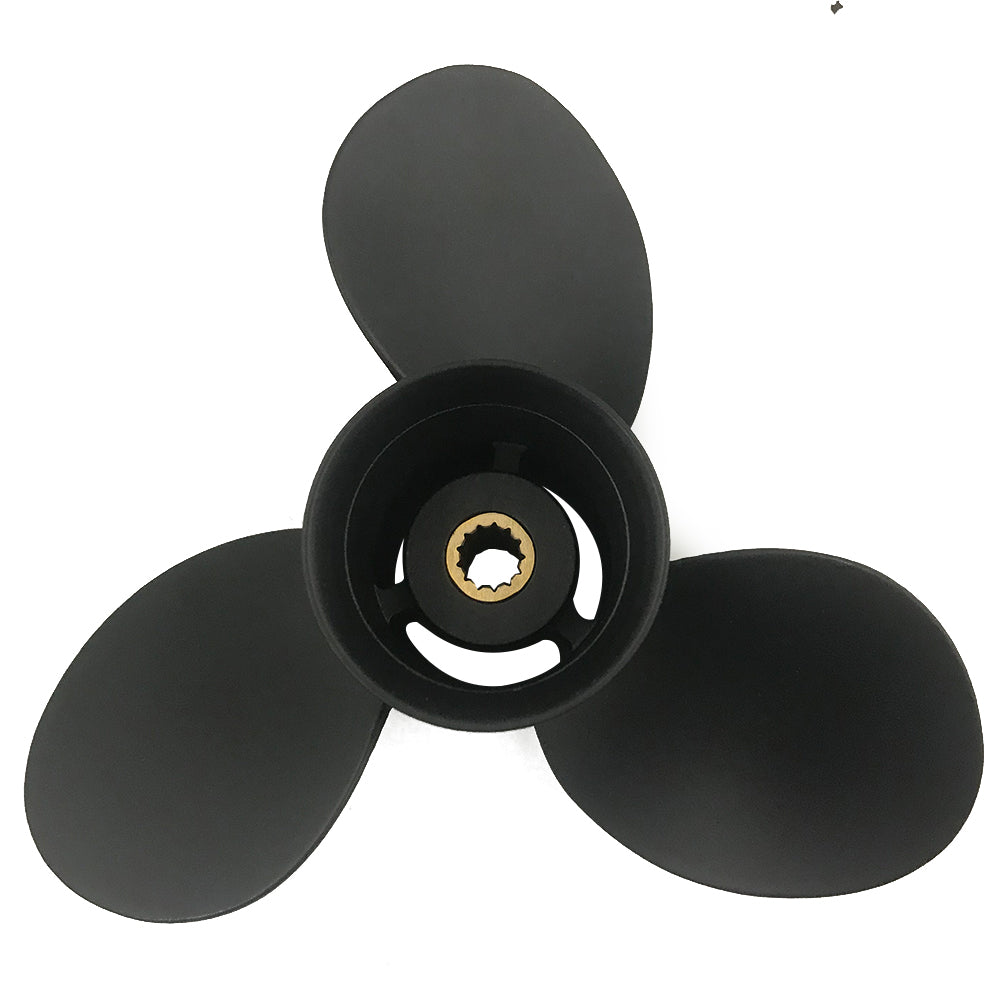The propulsion systems were considered at the forefront of this change, going at an unprecedented pace in evolution. Propeller shafts have, meanwhile, been marching towards enhancement in design and engineering, as industries, from maritime to aerospace and automotive, continue to demand higher efficiency, sustainability, and dependability. This article explores the cutting-edge innovations paving the way for the future of propeller shafts, looking at how new materials, manufacturing processes, and methods of smart integration are setting new standards for performance. Suppose you consider yourself an industry expert or are simply fascinated by the mechanics behind next-generation propulsion systems. In that case, this review will offer insights into the trends and innovations steering the future of propeller shaft technologies.
What Are the Latest Innovations in Propeller Shaft Technology?

How Do Prop Shaft Materials Impact Performance?
Materials used in propeller shaft design are crucial with respect to overall performance, efficiency, and life. Advanced materials like high-strength alloys, carbon fiber composites, and tempered steels have sparked a revolution in the industry. For example, carbon fiber composites are incredibly light and stiff, which helps reduce rotational inertia and, thus, improves fuel economy. Conversely, high-strength alloys resist wear and fatigue almost perfectly and are best suited for high-torque, variable-load environments.
Materials also account for the corrosion resistance that a shaft is subjected to, for instance, in marine or industrial use, where chemicals and moisture are in constant supply. A stainless steel or alloy coating will keep them safe from corrosive elements to a large extent, hence lengthening their operational life. Engineers can use newer material technologies to set properties such as stiffness/flexibility and torsional strength for desired performance requirements with the highest scrutiny and customization.
Proper application and combination of materials enable manufacturers to install the propeller shaft for better energy efficiency, fewer maintenance requirements, and longer service life, which are paramount in commercial and consumer applications.
What Role Does OEM Play in Propeller Shaft Design?
OEMs have a pivotal role in collaboration with engineering entities and the design and realization of propeller shafts. Hence, the performance, durability, and quality of an object or component depend on the OEM's design. By working hand-in-hand with automotive and industrial manufacturers, OEMs ensure that propeller shafts are made to exacting specifications suited to the application. The design methods rely heavily on advanced engineering methods and cutting-edge materials, often focusing on weight optimization, strength meaning, and efficiency potential.
OEMs must also implement tests to prove the design can withstand working at high and low temperature levels, very high torque loads, and very long operation hours, among others. Some tests are simulations based on data, whereas others are actual real-world conditions tests. Such measures significantly reduce the chances of design faults, ensuring all standards are rigorously met. They are also heavily involved in the eco-conscious aspect, considering the design of energy-efficient processes and recyclable material selection on sustainable manufacturing options. The whole set of solutions guarantees high-quality components, enhanced performance, and increased endurance of the systems they serve.
Understanding Cardan Shaft Advancements
Cardan shafts, an essential part of power transmission across various sectors, have transformed with materials, design, and manufacturing developments. In modern terms, Cardan shafts are made of lightweight yet sturdy materials. Such materials include high-strength steel alloys and carbon-fiber composites. This results in the overall weight reduction of such shafts with absolutely no trade-off in performance. The benefit of this is enhanced fuel efficiency in the automotive world, whereas in industrial machinery, it leads to better energy efficiency.
Another critical aspect, precision engineering, has also helped the Cartan shaft progress. Hence, improved balancing technology and favorable geometry produce less vibration and noise, thereby attaining smooth and quieter operations. As lubrication technology has improved, surface treatments have been enhanced, directly translating to wear resistance better and thus longer service life even under heavy braking conditions.
On the other hand, digital technology has entered the now sophisticated realm of shaft production, offering new ways of thinking through smart sensors, enabling shaft performance monitoring in real time. This innovative solution delivers data on shaft speed, torque, alignment, etc., thus enabling predictive maintenance that expedites repairs and reduces operational time losses. Through these developments, the latest technology ensures the continuous development of Cardan shafts to align with the demands of highly evolving industrial and automotive systems.
How Do Drive Shaft Technologies Impact Vehicle Efficiency?

The Influence of Driveshaft on Fuel Economy
The technology behind driveshafts plays a key role in providing a solution for optimizing fuel efficiency by improving the power transmission. The transmission of power from the engine to the wheels and the associated energy losses should be kept to a minimum by the best driveshaft design to transform all the fuel energy into linear kinetic energy. Applying newer lightweight materials, such as carbon fiber composites and advanced alloys, enables a lighter drivetrain, promoting fuel efficiency while retaining strength and durability. Precision-engineered driveshafts help lessen friction and vibration, which leads to higher energy absorption.
Cutting-edge systems were introduced into driveshaft systems just recently. Adaptive balancing systems are chosen to maintain the best rotational balance. Additional advantages include less unnecessary mechanical force, thus improving vehicle performance and lowering fuel consumption. For example, reducing inefficiencies in the drivetrain can achieve a 5% increase in fuel economy, illuminating the considerable contribution of modern driveshaft development to automotive sustainability.
Exploring Prop Shaft Length and Its Effects
Considered the longest element within a drivetrain system, prop shafts are the bearing elements from one pulley to a clutch of another pulley of the transmission. Generally, the greater the length, the more critical vibration acceleration becomes at certain speeds, thus causing vibration and wear at these speeds. Utility shafts will be compensated with additional countermeasures to assist in torque transfer; instead, shorter shafts have higher ratings for rotational stability.
The correct prop shaft length is based on the vehicle's design parameters, including the distance between the transmission and differential, and must allow for thermal expansion without sacrificing performance. When shaft lengths are not optimal, at maximum losses in efficiency, they could go down to 3%, which quite emphasizes the precision engineering necessary. The emergence of high-strength lightweight materials has created more options for better balancing shaft length with vehicle performance for a smoother ride and improved reliability in today's automotive systems.
What is the Role of Universal Joints in Drive Shaft Systems?
Universal joints, or U-joints, become essential for the operation of drive shaft systems and their power conversion potential. Always a possibility to vary the angular position and the speed of rotation smoothly between two shafts that are not perfectly aligned, withstood in the case of any vibrating shock applied to the vehicle, which means changes in angle of the shaft through impulsive movement of the suspension or chassis. The universal joints provide the flexibility the drivetrain system needs to deal with such changes; otherwise, stresses and inefficiencies would build up.
Contemporary universal joints are engineered with strong materials to function under the rigorous demands of automotive setups. These joints produce comparatively low energy losses with such advanced designs while transmitting torque evenly at variable angles and loads. Research warned of the dangerous effects of worn-out U-joints and improper maintenance, leading to vibrations and power loss. Therefore, innovations in lubrication and materials have enhanced the lifetime and efficiency of universal joints, thus further increasing the performance of the drivetrain system while reducing noise and vibration.
Why is Propeller Shaft Maintenance Crucial for Performance?

Key Maintenance Tips for Propeller Shaft Longevity
Regular Inspection: A regular visual inspection should be performed on the propeller shaft for any signs of wear, damage, or corrosion. Dents, cracks, or bent objects can compromise the functioning of a shaft. Regular checking assists with the early detection of issues, thus avoiding costly repairs or failures.
Proper Lubrication: Lubricate all moving parts, especially U-joints and splines. Good grease helps reduce friction and prevent excessive wear, thus prolonging the life of the propeller shaft. Maintenance intervals and specifications should be followed as recommended by the manufacturer.
Monitor U-Joints: U-joints are crucial for the smooth running of the transmission shaft. Listen for irregular noises like clunking or vibrations, as these can indicate worn or failing U-joints. Always replace them at once to avoid further damage to the drivetrain.
Check for Balance and Alignment: Propeller shaft balancing and alignment are necessary because an unbalanced or misaligned propeller shaft causes vibrations and uneven power application, leading to the destruction of other drivetrain components. Getting the shaft aligned and balanced by professionals at timely intervals is critical, especially when one senses vibrations in the drivetrain upon operation.
Protect Against Corrosion: Unexpected exposure to water, road salt, or debris can lead to rusting and corrosion. An anti-rust coating, along with regular cleaning of the vehicle's underbody, helps reduce such risks. These practices need to be diligently followed by vehicles plying on harsher roads.
Follow Load Recommendations: Assess the vehicle load. An overloaded vehicle will put extreme strain on the drivetrain and fast-track propeller shaft wear. Always follow the manufacturer's load capacity recommendations for the best performance and longevity.
Replace Worn Components Promptly: Bearings, seals, or other components should be replaced at the first sign of wear or defects to preserve the integrity of the shaft and its related parts later on. Delaying their repair would only intensify the problem, leading to more severe failures.
Thus, following these few maintenance key points will increase the propeller shaft's reliability and durability and ensure that it will operate effectively and safely for years to come.
How to Identify Wear and Tear in Propeller Systems
Many subtle signs or warning symptoms of wear and tear require an astute technician to observe and catch. Any abnormal vibration or noise while the propeller system operates tends to be a sure sign of wear. Excessive vibrations may result from an imbalance in the propeller blades or damage to those blades, while noise could come from the bearings or misalignments. Surface inspections on propeller blades should be done frequently: check for cracks, corrosion, or deformation because any of these could significantly undermine the system's performance and safety.
Another vital area to monitor is the shaft assembly, which may start showing signs of degradation through increased resistance or roughness on rotation. Leakage from sealing points or discoloration of the lubricant may point to an ineffective seal or contamination, either of which must be attended to immediately. Loss in efficiency, diminished thrust, and slow response can aptly describe aging propeller system performance.
Taking care of this would involve consistent maintenance and periodic inspections to fish out these indicators early; interventions against these signs would further prevent an operator from encountering catastrophic facade or functional failures, thus reducing downtime and extending the life of their propeller systems.
How Does Prop Design Enhance Marine Industry Applications?

Innovative Propeller Solutions for Boat Builders
The marine industry has been transforming through innovative propeller designs, with efficiency, durability, and environmental sustainability gaining priority. Advanced materials like high-strength alloys and composites are now used for the manufacture of modern propellers, which offer high corrosion and fatigue resistance and excellent performance in all marine settings.
Optimized blade geometry, with variable pitch and skewed blade designs, is one of the most exquisite innovations. These prevent the formation of cavitations, increase thrust efficiency, reduce noise and vibration, and provide close-to-smooth operations with a high degree of passenger comfort. For instance, CFD modeling holds significant value in propeller design for maximizing compatibility and energy efficiency for specific hull configurations.
Modular propeller systems contribute to a smooth installation and easy adjustments and maintenance, allowing boat builders to retrofit propulsion systems on varying vessel types without needing a complete replacement. Incorporating several environmentally conscious features also entails working engines that are in line with the IMO's (International Maritime Organization's) goals to reduce emissions and sustain operations through reduced fuel consumption and greenhouse gas emissions.
Since the high-performance marine vehicle market continues to prosper, these developments position boat builders to meet and exceed future legislation and customer demands for environmentally sound, high-tech technologies.
Impact of Shaft Size on Marine Performance
In marine applications, shaft size plays an essential role in vessels' overall performance, efficiency, and durability. It directly affects torque transmission, propulsion efficiency, and vibration levels within the propulsion system. A shaft of the proper size ensures that forces conveyed by the engine are transmitted efficiently to the propeller, limiting energy losses to benefit the vessel in speed and fuel efficiency.
For example, an oversized unit can be needlessly heavy and produce increased drag, adversely affecting fuel economy and putting added strain on the propulsion system. An undersized shaft will not meet the load requirements and will wear prematurely to the point of failure, becoming a risk to safety during operation. Materials such as high-strength stainless steel or special alloys come into play in optimizing shaft size to obtain a perfect balance of strength and weight. Thanks to these material improvements and computational modeling, today's designs can precisely set a shaft size upon a vessel's operational profile and performance goal to minimize vibration, service life, and environmental impact.
Understanding the Role of the Stuffing Box
The anchor of the stuffing box in maintaining the structural integrity of the vessel's propulsion system is indeed crucial. Located where the propeller shaft passes through the hull, it keeps water from entering the boat and allows for smooth shaft rotation. Usually, a packing-type arrangement is used, and this packing consists of flexible and heat-resistant materials, which are impressively compressed around the shaft to provide a water-tight seal. Dripless stuffing box systems have been developed in recent years to enhance the protection of the environment by reducing oil or water contamination. Maintenance procedures include checking for the packing's wear and adjusting the tension to ensure a prolonged working life and the highest operating efficiency possible.
What Are the Challenges in Propeller Shaft Manufacturing?

Overcoming Material Limitations in Propeller Shaft Production
Another set of challenges relates to material limitations in the production of propeller shafts, but we have been able to deal with those fully. One major problem is selecting materials that can withstand extremely high operational stresses at the minimum possible weight to guarantee maximum efficiency. To counter this, I explore alloys and composite materials of high quality with a suitable balance among strength, weight, and resistance for good performance over time. Other than that, applying advanced engineering techniques to improve material properties, such as heat treatment or surface coatings, has been beneficial to curb wear and corrosion.
A further challenge concerns material consistency throughout production. Variability in raw materials can trigger product inconsistency, thus hindering performance. In my approach, these issues are addressed by quality control measures for every manufacturing step, which include stringent testing on materials, monitoring of the processes, and great machining technology that ensures accuracy. Using such solutions, I can successfully overcome material limitations and deliver reliable propeller shafts that perform excellently under varied industrial needs.
The Role of CNC in Precision Manufacturing
CNC is the keystone of accuracy in manufacturing, and I place a lot of weight on it when coming up with perfectly acceptable outputs concerning quality and accuracy. CNC automates machining, thus controlling it with high-grade software, so I might carry out intricate designs while maintaining consistent production with the least error. Such a level of precision becomes necessary for manufacturing, say, propeller shafts, where slight discrepancies may cause certain technical inefficiencies or hinder tight performance.
Such attributes, combined with CNC's flexibility, lend it a classic edge. Carbon could be carved, reshaped, and kept to the exact inches and measurements required for any job, which would generally be tough to do by hand. CNC machines reduce production times, the amount of waste produced, and increase quality standards. So, integrating CNC into the manufacturing process simplifies operations and directly channels focus onto the finer details of quality control.
Besides technical considerations, CNC also factors in scaling, production-level execution, and solution-level innovation. CNC keeps things consistent, whether it's a prototype or a whole batch of component preparation. Another plus of CNC enters the realm of solution-level innovation, where combining the latest technologies like simulation software and real-time monitoring systems enables me to predict production issues and optimize production continuously. In essence, I consider CNC not just a tool but a vital partner in delivering dependable, high-performance solutions on time that address the ever-changing requirements of modern industries.
Reference Sources
-
Exploring Advanced Propeller Shaft Technologies and Their Impact on Performance - Discusses the evolution of propeller shaft technologies to meet modern demands.
-
Kinetixx - Driver Shafts - Highlights innovative structural technologies in shaft design.
-
The Crucial Role of Prop Shafts in Automotive Efficiency - Explores the importance of prop shafts in distributing power and enhancing vehicle efficiency.
Frequently Asked Questions (FAQs)
Q: What are the major components of the advanced propeller shaft technologies?
A: The main parts comprise coupling, u-joints or universal joints, flange, and slip joint. These members combine to allow relative movement while transmitting power from the engine to the wheels.
Q: How would one say the diameter of a propeller shaft affects performance?
A: The diameter must be large enough to resist distortion forces generated by torque and rotational forces. The larger the diameter, the better the strength; the smaller the diameter, the less the weight, but power-transmission possibilities may be reduced.
Q: What purpose does a coupling serve in a propeller shaft?
A: The coupling joins the shaft assembly to other components, such as the gearbox or differential. It transmits mechanical power and accommodates misalignments and movements in the drivetrain's components.
Q: How do different drivetrains use propeller shafts for their operations?
A: In RWD-type mechanisms, the propeller shaft transfers power from the engine to the rear axle. In AWD or 4WD, the shaft can also transfer power to the front wheels to offer better performance and traction on various terrains.
Q: What materials are typically employed in building a propeller shaft?
A: Some advanced prop shafts are manufactured from materials such as Aqualoy, which offers much better strength and corrosion resistance than the usual steel. This certainly increases the durability and performance in rough conditions.
Q: How would shaft length affect performance?
A: Shaft length governs the alignment and distance between components. A long shaft elevates flex and power loss, while a correctly sized shaft conveys power with the least vibration.
Q: What is a torque tube, and what does it do with propeller shafts?
A: A torque tube is a positive mechanism for enclosing the propeller shaft, through which it holds and keeps its alignment. Upon functioning, it greatly facilitates power transmission with not so much as a slight movement or distortion on the part of the shaft.
Q: How do u-joints work in a propeller shaft system?
A: U-joints or universal joints transmit movement while allowing some angular movement between the engine and the wheels. They are useful for maintaining flexibility in the drivetrain, notably in vehicles with variable suspension and axle positioning.
